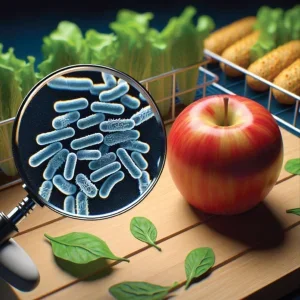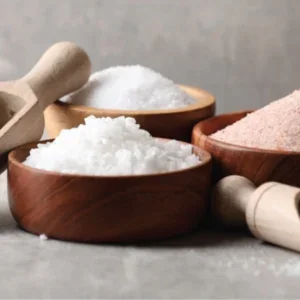The Mediterranean would be inconceivable without olive oil. Even in the Bronze Age, the Minoans thought it represented wealth, while their Mycenaean successors exported it with gusto. By the time the Romans had transformed the sea into Mare Nostrum, the yellow liquid provided over 10% of the typical diet, while also starring in countless ancient recipes. More than that, olive oil weaved itself into the culture of the age. It’s surely no accident, to give one example, that in 2023 archaeologists in Spain discovered a poetry excerpt by Virgil scratched onto an oil jar fragment. According to the researchers, the anonymous scribe completed his work some 1,800 years ago.
Olive oil has retained its hallowed spot in the Mediterranean heart. Spaniards, for instance, consume an average of 11.44 litres of the substance each year, a figure closely shadowed in Italy and Greece. Over recent decades, meanwhile, oil has become a staple across other countries too. In 2022, to give one example, Americans used approximately 381,000 metric tonnes of olive oil, whether in cooking, dressing or dipping. Nor is this enthusiasm hard to appreciate, with olive oil a reliable partner in the fight against heart disease, diabetes and high blood pressure.
Yet the explosion of the olive oil sector does, arguably, come with downsides – not least when it comes to sustainability. Especially when dovetailed by intense industrialisation, the cultivation and processing of olive trees can pollute air and earth, even as water consumption is often perilously high too. Especially around the Mediterranean, the erstwhile home of the olive but a region which now faces rising temperatures and drought, this is something which could have disastrous consequences. Yet the future of this ancient fruit is far from hopeless. Bolstered by new technology, farmers and factory workers are battling to cut the environmental footprint of olive oil manufacturing, with vast consequences for both the future of the planet – and that of this most venerable sector.
Pipped to the post
It’s hard to overstate the scale of the modern olive oil industry. If nothing else, that’s clear from |the statistics, with work by Polaris Market Research finding that the global market is worth some $14.5bn, with CAGR estimated to hit 3.5% over the coming years. Yet with size, inevitably, comes industrialisation – and with industrialisation, environmental dangers loom. Like all intensive agriculture, using nitrogen fertiliser or burning residue is bound to impact the planet, but there are more specific challenges too. One, especially at more industrialised sites, involves water use. “On the agricultural side,” notes Teresa Garcia Lopez, director of sustainability and environment at American olive oil company Pompeian, “high-density olive orchards require much more water than traditional groves.” That’s reflected in practice: according to one 2019 study, one litre of finished oil has a water footprint of almost 4,000 litres.
+90%
The percentage by which the consumption of water during olive oil production decreased, thanks to changes in the process instituted in the 2000s.
Pompeian
That’s reflected by other traditional difficulties. Essentially, this can be understood by how oil is processed. To get from raw olives to bottled oil means dealing with hazardous effluents, typically exhibiting antimicrobial or phytotoxic properties. Considering, moreover, that around 30 million cubic metres of olive mill wastewater is produced annually around the Mediterranean, and that it can’t be sent to ordinary wastewater treatment plants, there’s obviously cause for concern. That’s echoed, says Juan Antonio Polo Palomino, by the fact that olive oil’s impact isn’t one way. As the head of the olive oil technology and environment department at the International Olive Council puts it, the relationship between “agriculture and climate change is bidirectional” – meaning that climate change could yet stymie olive growing even as oil affects the planet.
All the same, it’d be wrong to imply that it’s all doom and gloom. To an extent, that’s down to the basic characteristics of olives themselves. As the Romans and Mycenaeans would themselves surely have recognised, traditional olive groves are remarkably hardy, requiring far less water than high-intensity groves. That dovetails, explains Juan Carrasco Vilchez, by the “high biodiversity” of many olive-growing areas, with the global sustainability manager at Spanish multinational Deoleo explaining that thick ground cover can hide a plethora of flowers and plants. Altogether Vilchez adds, every litre of olive oil Deoleo produces results in two kilos of carbon dioxide – but the olive groves themselves eliminate about ten kilos from the atmosphere. “That results,” he stresses, “in a positive carbon footprint of eight.”
8 kg
The overall positive carbon footprint of one litre of olive oil.
International Olive Council
A whole lotta grove
Notwithstanding the innate environmental benefits of olive oil production, insiders are working hard to bolster their sustainability credentials in other ways. One notable example, says Lopez, involves waste water. “With the transition in the 2000s to a different olive oil mill extraction system that uses almost no water,” she explains, “the consumption of water during olive oil production decreased enormously – more than 90% – and the quality of the oil increased: namely in polyphenols concentration.” It helps, says Vilchez, that producers can now reuse waste water in a prime example of the circular economy. From there, technology can cut water use in other ways, with drones helping farmers understand exactly how much H2O they need – before efficient watering systems, powered by the latest software, target water to exactly where it’s needed.
In a broader sense, moreover, it’s clear that the globalised nature of olive oil production requires work up and down the supply chain. As Palomino puts it: “From the farmer to the consumer, to the industrialist, the packer, the supplier, the distributor and the catering sector, each one makes decisions that can improve sustainability throughout the life cycle of the product.” That’s clearly borne out in practice. At Deoleo, for instance, sustainability leader José María Zamora describes working with partners to make packaging more recyclable – the company is already moving towards rPET plastic, while the vast majority of the Madrid firm’s factories are waste free. Across the Atlantic, Pompeian is moving in a similar direction. As Paula Lopes, the company’s vice president of quality, R&D explains, that involves reducing the weight of packaging and incorporating recycled materials into products. Through it all is a commitment to the latest environmental codes: Pompeian has adopted the so-called SFI cardboard certification, designed to protect forests, while Deoleo boasts Intertek Sustainability validation across a range of supplies.
“From the farmer to the consumer, to the industrialist, the packer, the supplier, the distributor and the catering sector, each one makes decisions that can improve sustainability throughout the life cycle of the product.”
Juan Antonio Polo Palomino
As these varied efforts imply, meanwhile, success would be impossible without the support of external stakeholders. That unsurprisingly begins at the very start of the oil production process, with Vilchez explaining how Deoleo encourages farmers to protect the lively ground cover of their olive groves. Completing some 30 training sessions with agricultural partners, he says it’s vital not to “impose” solutions on unwilling participants. Pompeian, for its part, encourages comparable thoughtfulness. “We have been exploring a collaboration with Pollinator Partnership to implement a certification programme,” Lopez says, “knowing an important resource in the development of sustainable olive groves includes the development of a robust pollinator community – bees, birds, insects – on all farms.” Just as strikingly, Lopez adds that she’s keen on sharing the roadmap with competitors across the sector.
Oil be back
These campaigns are obviously good for the planet. Bolstered by those impressive carbon figures, what Palomino calls the “manmade forest” of olive groves, consumers are “fighting against climate change” through every bottle of oil they buy. Yet as this statement implies, increased sustainability doesn’t merely provide succour to a warming world – but also pleases a public increasingly conscious of their green responsibilities. According to recent work by IPSOS, to give one example, some 58% of European consumers consider the climate when purchasing food. As Deoleo’s Zamora puts it: “They want us as companies to be more sustainable because they make them feel better.”
To put it differently, the move towards sustainability doesn’t have to be a zero-sum game – and can instead bolster sales while simultaneously limiting global temperature rises. Not that the situation is quite that simple. For one thing, Zamora notes that while consumers are keen to buy green, they’re not always comfortable with the higher retail prices environmentalism can bring. There are broader challenges too. While Pompeian and Deoleo are just two of the sector giants pressing ahead with voluntary green certification, fully-fledged regulations have arguably been slower to emerge. Yet here too, things are changing fast. “Recently,” Palomino explains, “several initiatives have emerged to generate ‘carbon credits’ from agriculture which could hypothetically be monetised on the voluntary emissions market. The EU is at present working on a framework for certifying carbon removals.” With the US Environmental Protection Agency exploring new pollutant rules of their own, agriculture will obviously have plenty to keep busy with – but based on past form, the olive oil sector doesn’t have much to worry about.






